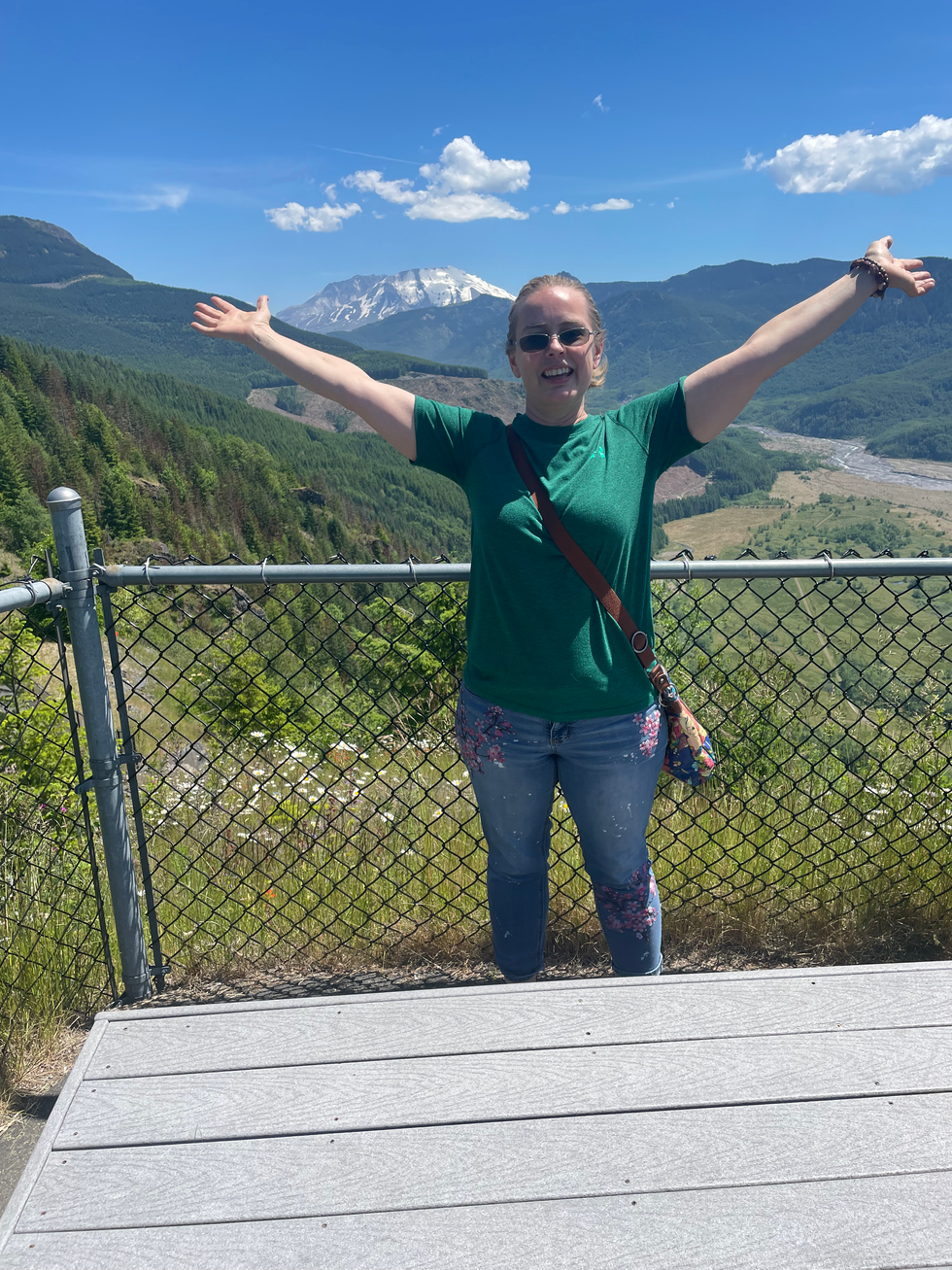Chaos and Creation at Mount St Helens
- Karrie Zylstra Myton

- Jun 25, 2024
- 4 min read
Updated: Jun 25, 2024
On Saturday, May 17, 1980, I was almost nine years old and visiting my mother's family in Yakima, Washington. We attended my great grandfather's funeral that day. I can't remember much about the service and I hadn't known my mother's grandfather at all, but I do remember that my parents considered spending the night. My younger sister and I REALLY wanted to stay. Hotels were SUPER fun and there would probably have been a pool where we could swim for hours and enjoy the Eastern Washington sunshine.
But my mom had to work a 3-11 pm nursing shift the next day and our parents were watching their pennies. They ignored our protests and packed us up for the two-hour drive back over the mountain pass to get home again.
On May 18th at 8:32 am, Mount St Helens erupted, sending a column of smoke and ash 80,000 feet into the air, according to Wikipedia. The winds carried the ash eastward towards Yakima at 60 miles an hour and arrived by 9:45 am. That's when day turned to night in Yakima as an estimated 600,000 tons of ash settled on to the city.
If we had stayed, Mom would have missed her Sunday shift. We probably would have been stuck indoors in a hotel and in masks for at least a week.
My parents definitely made a good choice to leave on Saturday even though Mary and I missed out on that pool.
For months after that, the stratovolcano in southwest Washington remained very active. Mount St Helens had five more smaller eruptions from May to October of 1980. We could see the columns from our house and were grateful that the winds blew east rather than north or we would have also been shoveling the fine particles out of our driveway.
The destruction just from that first event was incredible. The mountain released 24 megatons of energy—over a thousand times the force of the bomb the U.S. dropped on Hiroshima at the end of WWII. At least 57 people died in the volcanic blast, many killed by the heat of the lateral blast that traveled up to 400 miles an hour full of superheated material nearly 700 degrees Fahrenheit. Hundreds of acres were destroyed, many blown flat or burned where they stood. Thousands of deer and elk perished. President Carter flew over the site later and described it as a "moonscape."
At the time it didn't feel like the area around that mountain could possibly recover and, if it did, I couldn't imagine it happening in my lifetime.
But you and I now know that it did recover. The area is even thriving now.
The forests grew again and the animals came back. The humans who survived rebuilt, made new trails, grew new crops, and even built visitor centers to help us all understand what happened in 1980. If you weren't there, you can't really imagine the destruction without looking at those photos, videos, and interactive displays.
I'm drawn to this place now because of its ability to re-create and recover. Every year or so, I make the trek and drive a couple of hours to visit. And I'm especially drawn lately because that mountain's recovery gives me hope—a mountain-sized example of hope even. The area around Mount St Helens proves to me that even after incredibly destructive forces rip through our world, life finds a way to put things back together again.
It helps me to see this incredible creative recovery when I am feeling the tremendous forces of grief and loss in my life.
It helps me to see this incredible creative recovery when I look at the pain still rippling through all of us from the pandemic.
And it helps me to see this creative recovery as I look at the devastating wars happening around our world right now.
Of course, chaos is still happening on the mountain. There has been a landslide that took out some of the roads recently and the mountain will likely erupt again in a hundred years or so.
But right now, the landscape is more full of creation than chaos. And because Mount St Helens is such a powerful and beautiful reminder of recovery, we are planning an Art Words and Yoga trip there on Wednesday, July 24th.
We are even going to a site with many options for people with different needs and abilities. The Forest Learning Center has air conditioning, restrooms, a movie to watch, indoor exhibits, and a gift shop. Outside the center you'll find an overlook with a telescope to view the elk in the valley below the cratered mountain. (If we are lucky the park rangers will be there to help us spot them.)
There is also a forested hike with options for shorter paved paths or a longer mile-long path. We'll practice exploring the mountain like we practice our poses—with a variety of options for movement.
We'd love to have you join us! Here are the details. You can click here or on the images to sign up or email me your questions to karriezmyton@artwordsandyoga.com.










Comments